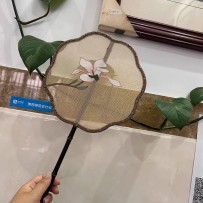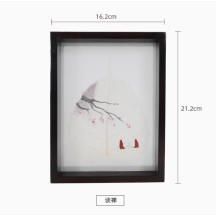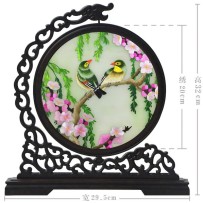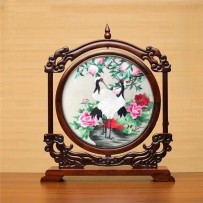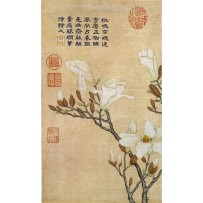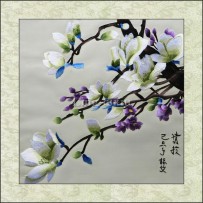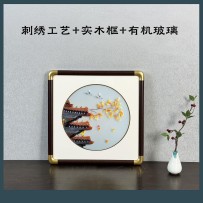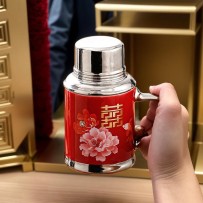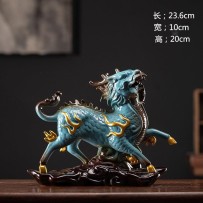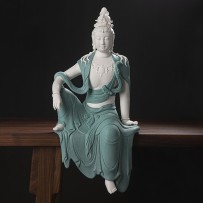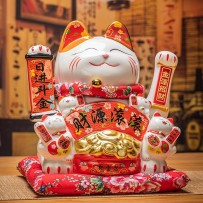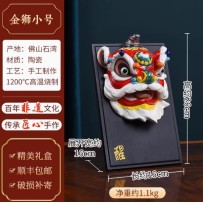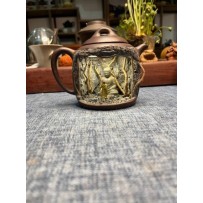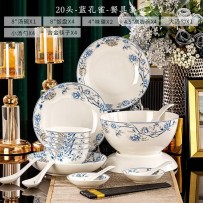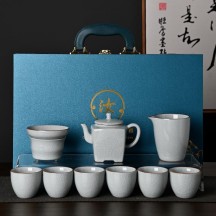Subcategories
The teapot is the ideal companion for brewing tea—one pot dedicated to one type of tea—symbolizing unwavering loyalty and family harmony in traditional culture. Therefore, gifting tea and a teapot during festive occasions is more than a gesture; it is a gift of culture and refined taste.
"A gift of culture that is refined both inside and out.The imagery of the lotus and duck together symbolizes 'the treasured duck passing through the lotus,' conveying wishes for top success in imperial examinations.This plate is not only a beautiful home decoration but also an ideal gift for friends and family."
The round fan symbolizes reunion and happiness, embodying traditional Chinese auspicious meanings. Since ancient times, the Chinese have associated round fans with the Mid-Autumn Festival for two reasons: first, the festival celebrates family reunion, which the round fan represents; second, the fan’s shape resembles the full moon, and moon gazing during Mid-Autumn is a cherished cultural tradition.
"The round fan symbolizes harmony and reunion, representing the joy and completeness of a newlywed couple’s life together. It is also known as the 'Hehuan Fan' (Fan of Harmony), originally serving as a blessing for newlyweds. Over time, its meaning gradually extended to express good wishes for an entire household
Embroidery is a form of handmade art developed to decorate and enrich daily life. At the same time, it has also served as a symbol of power and status, as well as a carrier of wishes for a beautiful life
Embroidery is a form of handmade art developed to decorate and enrich daily life. At the same time, it has also served as a symbol of power and status, as well as a carrier of wishes for a beautiful life
Chinese embroidery has a long and profound history, with its origins tracing back to the Shang and Zhou dynasties, and its legacy continuing into modern times. Over the course of more than 3,000 years and through countless dynastic changes, the art of embroidery—like the totem of the phoenix—has deeply rooted itself in the hearts of the people and grown ever more vibrant and flourishing
Screens first appeared over 3,000 years ago during the Zhou dynasty as exclusive furnishings for the emperor, symbolizing status and power. Over time, their function evolved to include blocking wind, dividing spaces, and providing privacy, while also serving as decorative elements that enhance the beauty of an environment. This combination of utility and aesthetics has allowed screens to endure through the ages and develop into a variety of artistic forms
Behind the various flowers depicted in the artwork lies a wealth of symbolic meaning, reflecting the ancients’ deep understanding of the natural seasons and embodying the philosophical concept of harmony between heaven and humanity
Since ancient times, embroidery has been a form of handmade art developed to decorate and enrich daily life. It has also served as a symbol of power and status, as well as a medium for expressing hopes for a beautiful life
Since ancient times, embroidery has been a form of handmade art developed to decorate and enrich daily life. It has also served as a symbol of power and status, as well as a medium for expressing hopes for a beautiful life
The qilin was the most auspicious animal that ancient Chinese people hoped would appear. Its presence signified the happiness of an era. Therefore, people at that time wished for the qilin to always accompany them, bringing luck and brightness, while dispelling misfortune
Guan Yu, courtesy name Yunchang, originally named Changsheng, was from Xieliang in Hedong Commandery, under the jurisdiction of Sili. He was a general during the late Eastern Han Dynasty and a key confidant of Liu Bei. He was known as “a match for ten thousand enemies
Guanyin Bodhisattva is one of the Four Great Bodhisattvas in Chinese Buddhism. The belief in Guanyin has had a profound influence in China, giving rise to various folk legends about the bodhisattva. One widely circulated story is that Guanyin was originally Princess Miaoshan, the third daughter of King Miaozhuang of the Kingdom of Xinglin
The Lucky Cat is usually made of ceramic and is typically white
The Awakening Lion is a folk culture that combines martial arts, dance, music, and other elements, symbolizing good fortune and auspiciousness. It represents strength, bravery, and vitality. The meaning of the Awakening Lion is rich and it is widely popular among the people, with its fame spreading overseas. Wherever there are Chinese communities, there is the Awakening Lion.
The Awakening Lion is a folk culture that combines martial arts, dance, music, and other elements, symbolizing good fortune and auspiciousness. It represents strength, bravery, and vitality.
The design of the Five Blessings Teacup is inspired by the traditional Chinese concept of "Five Blessings Arrive at the Door" (Wu Fu Lin Men). The "Five Blessings" represent longevity, wealth, health and peace, virtue, and a peaceful passing—symbolizing good fortune and auspiciousness
Gifting a tea set is a gesture of respect, making it suitable for giving to leaders, elders, or clients. It can also be given to newlyweds, as serving tea is an important part of Chinese wedding ceremonies. For traditional Chinese people, offering tea is a highly significant ritual.
Gifting a cup symbolizes a deep bond and mutual trust between both parties. It conveys heartfelt wishes for the recipient to remain safe, healthy, and happy.
The Zisha teapot is a symbol of good fortune, prosperity, and the blessings of both longevity and happiness. This symbolism stems from its rich cultural heritage and historical background. In ancient times, Zisha teapots were exclusively used by royalty, nobility, and refined scholars, representing an elegant taste and a pursuit of sophistication and nobility.
Blue and white porcelain, originating in China and renowned worldwide, is a type of high-fired underglaze ceramic featuring blue patterns on a white background. Commonly referred to simply as "blue and white," the term also denotes the decorative technique itself. Known for its fresh, elegant, and refined style, it is not only the most influential type of porcelain before industrialization but is also regarded as a representation of the Chinese aesthetic ideal.
In China, gifting a tea set is considered an elegant gesture of etiquette. Presenting a complete tea set represents care and respect for the recipient, while also reflecting the giver’s taste and cultural refinement. Giving a full set of tea ware symbolizes well-wishes for the recipient, hoping they enjoy a fulfilling life and lasting happiness.













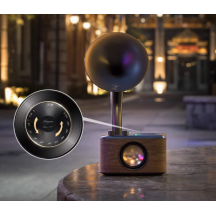
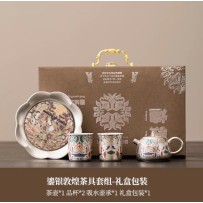

![[Wrist Strap & Stand] Lotus Cultural Creative Phone Case Compatible with iPhone](https://chinachic.shop/2071-inner_default/-wrist-strap-stand-lotus-cultural-creative-phone-case-compatible-with-iphone.jpg)

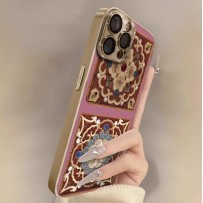

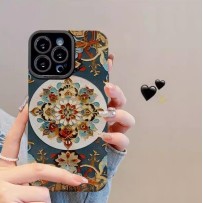


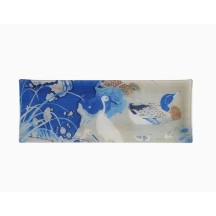
![[Intangible Cultural Heritage Gift] Handmade Suzhou Specialty Kesi Silk Round Fan with Rare Gold Weaving"](https://chinachic.shop/2114-inner_default/-intangible-cultural-heritage-gift-handmade-suzhou-specialty-kesi-silk-round-fan-with-rare-gold-weaving.jpg)

